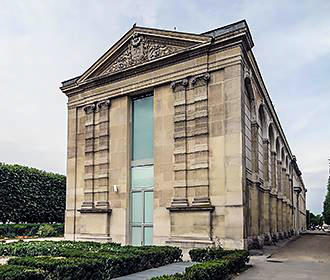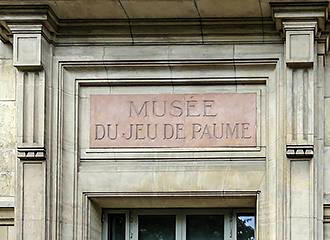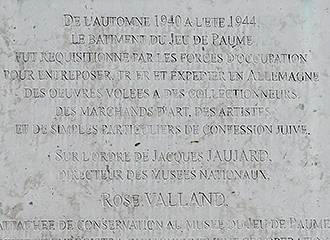History of Jeu de Paume museum in Paris
The Galerie Nationale du Jeu de Paume is also known as the Musee Jeu de Paume and is located on the Northern side of the Tuileries Gardens, which links the famous Louvre Museum and to the Place de la Concorde.
Jeu de Paume is the French name for a game that is closely related the game of tennis that we know today, and it was Napoleon III who wished to have a building constructed in order to house a real tennis court.
Constructed in 1861
This large rectangular shaped building with a length of 80m and a width of 13m was constructed in 1861 during the reign of Napoleon III on the Western end of the Terasse des Feuillants within the Tuileries Gardens.
However, it ended up not being used as a tennis court for many years, and by 1909 the space within the Jeu de Paume building became an exhibition venue.
With permanent collections growing along with the temporary exhibitions it conducted, this monument in Paris became referred to as the Jeu de Paume Exhibition Centre in 1922, which was after major building work had been undertaken to improve the visitors experience.
A part of the Musee du Luxembourg, the Jeu de Paume was home to art known as contemporary art from foreign schools, and then by 1930 this museum in Paris started collecting additional contemporary art works from artists such as Pablo Picasso and from the school of Paris.
Modern and contemporary art exhibitions
By 1932 the building itself took on the external appearance that it still has today, although internally there have been additional modifications over the years, but right up until World War II there were many different exhibitions of modern art and contemporary art held at the Musee Jeu de Paume.
However, the Jeu de Paume was taken over by the Nazis during World War II and the building was utilised as a storage place for works of art that had been confiscated from French Jewish families like the Rothschild's.
Yet the curator, who was part of the French Resistance kept a list of all art works that the Nazis had accumulated, and after the war had ended, fortunately most pieces were returned to their rightful owners.
Then by 1947, the building officially became the Musee du Jeu de Paume and held a great collection of art from the Impressionists.
With further renovations that were conducted in 1958 to improve the lighting and make it more comfortable by adding air conditioning, the Musee du Jeu de Paume was starting to be known as the most impressive museum for Impressionist art throughout the world.
But under the grand projects of the French President, Francois Mitterrand, the Musee d’Orsay was opened as a follow on museum from the Musee du Louvre, so that it could display art works from the 19th century.
Therefore the Impressionist collection of the Musee du Jeu de Paume was transferred to the Musee d’Orsay in 1986 and the Jeu de Paume in the Tuileries Gardens was closed, yet the history of the Jeu de Paume does not end there.
Again, under the grand projects of Francois Mitterrand, the architect Antione Stinco was chosen to redesign the building, but he had to keep the external appearance exactly as it was.
So, from 1987 new exhibition spaces were created along with a film and video theatre, a bookshop and cafe. The rooms themselves were designed in such a way to provide a vast amount of natural light and great views over the Tuileries Gardens, the Place de la Concorde, the River Seine and Les Invalides, which is where you can also get to see three different museums in Paris along with the Tomb of Napoleon Bonaparte I.
It was inaugurated in the June of 1991 by the Francois Mitterrand and called the Galerie National Jeu de Paume and offered visitors an entirely different look at modern and contemporary artists, but also to introduce people to other art areas such as film, video and cinema.
Yet even this part of its history came to an end in the March of 2004 and since this time the Jeu de Paume has now developed a completely different style of exhibition for photography and media presentations.
In fact, the Musee du Jeu de Paume started implementing a plan from 2007 to introduce new mediums including via the web with a virtual space, along with adding Le Magazine in 2010 which uses a range of resources including video, photo gallery, audio and text files that are available in both French and English.


